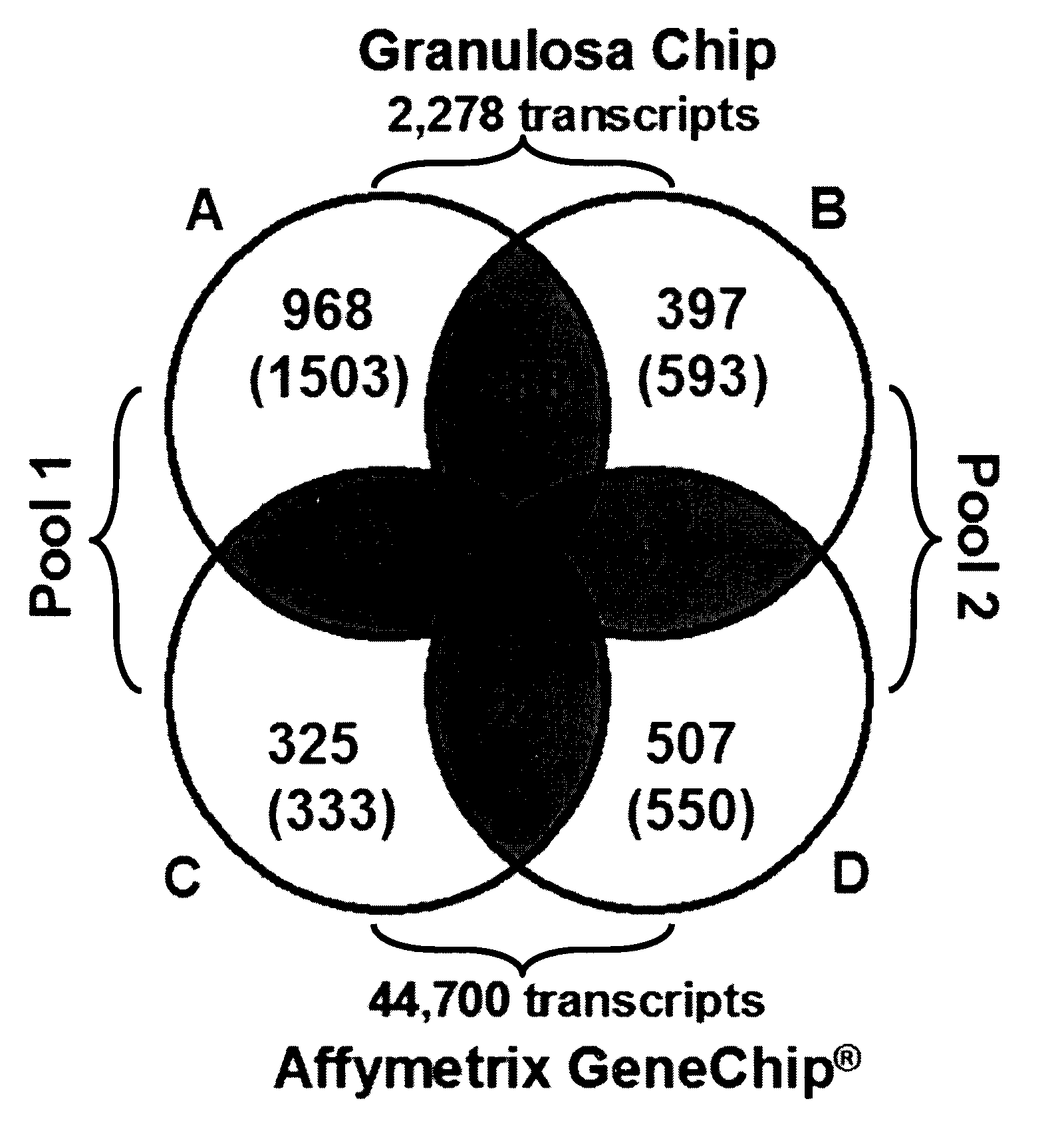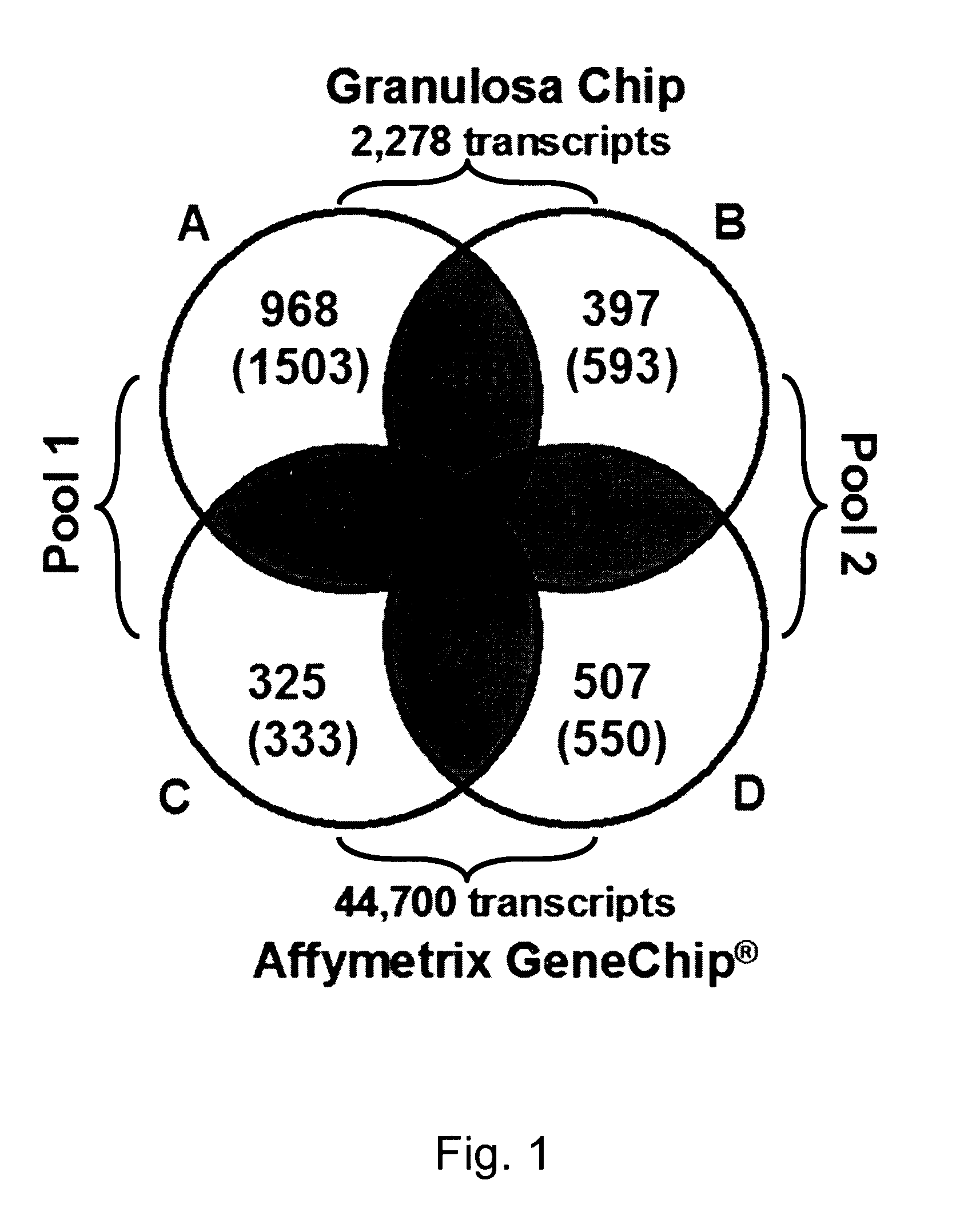Mammalian oocyte development competency granulosa markers and uses thereof
a technology of granulosa markers and oocytes, which is applied in the field of granulosa markers of mammalian oocyte development competency, can solve the problems of quality or viability, lack of objective criteria to distinguish between several embryos,
- Summary
- Abstract
- Description
- Claims
- Application Information
AI Technical Summary
Benefits of technology
Problems solved by technology
Method used
Image
Examples
example 1
Markers in Human Follicular Cells Associated with Competent Oocytes
Follicular Cells Collection
[0048]Follicular cells were obtained from women (n=40) that were undergoing IVF treatment with their consent at the Fertility Center at the Ottawa Hospital, Canada. These women had endometriosis, tubal or idiopathic infertility diagnosis but not polycystic ovary syndrome (PCO). The procedure was performed with approval from the Ottawa Hospital research ethics board. Following ovarian stimulation, follicular fluid, follicular cells and oocytes from individual follicles were collected by ultrasound-guided follicular aspiration using a double lumen needle. The oocytes and surrounding cumulus cells were removed for IVF treatment. The remaining follicular fluid was centrifuged at 800×g for 10 minutes at room temperature to isolate the follicular cells containing mural granulosa cells, for each individual follicle. The resulting pellet was suspended in 500 μl of phosphate buffered saline solution...
example 2
Intra Patient Markers in Human Follicular Cells Associated with Competent Oocytes
Follicular Cells Recovery
[0083]Mural granulosa cells were obtained from women (n=40) that were undergoing IVF treatments at the Fertility Center at the Ottawa Hospital, Canada. Women with major indications for IVF, such as tubal infertility, unexplained infertility including endometriosis stage I / II / III and partners not requiring ICSI were recruited to the study. Patients with polycystic ovary syndrome (PCO), or partners with severe male factor requiring ICSI were not included in the study. The procedure was performed with the approval from the Ottawa Hospital Research Ethic Board.
[0084]Following ovarian stimulation, follicular fluid, follicular cells and oocytes from individual follicles were collected by ultrasound-guided follicular aspiration using a double lumen needle. The oocytes and surrounding cumulus cells were removed for IVF procedure. The mural granulosa cells recovery was performed as descr...
PUM
| Property | Measurement | Unit |
|---|---|---|
| morphology | aaaaa | aaaaa |
| concentration | aaaaa | aaaaa |
| threshold | aaaaa | aaaaa |
Abstract
Description
Claims
Application Information
 Login to View More
Login to View More - R&D
- Intellectual Property
- Life Sciences
- Materials
- Tech Scout
- Unparalleled Data Quality
- Higher Quality Content
- 60% Fewer Hallucinations
Browse by: Latest US Patents, China's latest patents, Technical Efficacy Thesaurus, Application Domain, Technology Topic, Popular Technical Reports.
© 2025 PatSnap. All rights reserved.Legal|Privacy policy|Modern Slavery Act Transparency Statement|Sitemap|About US| Contact US: help@patsnap.com



